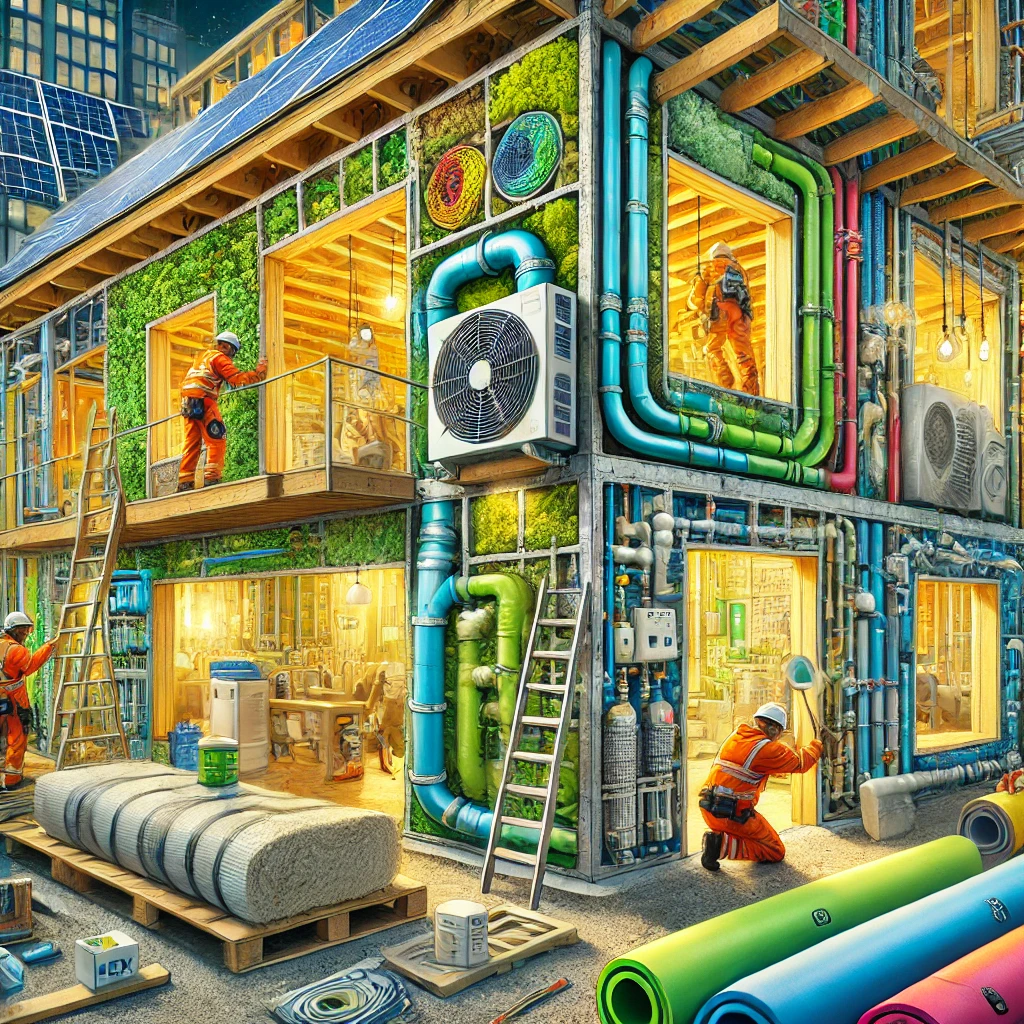Mitigating Risks in MEP Engineering Through Effective Planning

In the modern world, sustainability is no longer a luxury but a necessity. The building and construction industry, with its vast consumption of energy and materials, is a primary target for sustainable practices. Among the key components in any building, Mechanical, Electrical, and Plumbing (MEP) systems are critical areas where sustainability can have a massive impact. By incorporating sustainable materials in MEP systems, building projects can reduce their environmental footprint, improve energy efficiency, and contribute to a healthier environment. This blog post will guide you on how to integrate sustainable materials into MEP systems, highlighting their benefits, best practices, and key considerations.
Why Sustainable Materials in MEP Systems Matter
MEP systems play a crucial role in determining the overall sustainability of a building. They account for the majority of energy use, emissions, and even water consumption. Incorporating sustainable materials into these systems helps:
- Reduce environmental impact: Sustainable materials are often derived from renewable sources, which decrease reliance on finite resources.
- Enhance energy efficiency: Certain materials can enhance the insulation, conductivity, and performance of MEP systems, leading to reduced energy consumption.
- Improve indoor air quality: Sustainable materials typically emit fewer volatile organic compounds (VOCs), improving the health and well-being of building occupants.
- Support circular economy goals: Many sustainable materials are designed for recyclability, minimizing waste and reducing the need for virgin materials.
Mechanical Systems: HVAC and Sustainable Materials
Mechanical systems, particularly HVAC (Heating, Ventilation, and Air Conditioning), are essential in maintaining indoor comfort but can be energy-intensive. Here are ways to incorporate sustainable materials into mechanical systems:
- Eco-friendly insulation materials: Traditional insulation materials can contain harmful chemicals and have a high environmental impact. Sustainable alternatives like sheep wool, cellulose, and cork are biodegradable, offer excellent thermal properties, and are safer for human health.
- Recycled metals for ductwork: Recycled aluminum and steel are increasingly popular in HVAC ductwork, reducing the demand for newly mined metals. These recycled materials maintain the durability and strength needed for efficient airflow while having a smaller carbon footprint.
- Low-emission refrigerants: Transitioning to refrigerants with low global warming potential (GWP), such as hydrofluoroolefins (HFOs), can significantly reduce the environmental impact of HVAC systems.
Electrical Systems: Sustainable Wiring and Components
Electrical systems present several opportunities for incorporating sustainable materials. While wiring, conduits, and other electrical components may seem minor, their cumulative environmental impact can be significant.
- Halogen-free wiring: Many conventional electrical wires are coated with materials that release toxic halogens when burned. Halogen-free wires use sustainable coatings that reduce fire-related emissions and improve indoor air quality without compromising performance.
- Recycled copper and aluminum wiring: Copper is a primary material in electrical wiring, and using recycled copper can drastically reduce the environmental impact of mining and processing. Recycled aluminum can also be used in high-voltage electrical applications.
- Energy-efficient lighting fixtures: The materials used in LED lighting, such as aluminum heat sinks and recyclable plastic components, can be chosen for their sustainability. Additionally, LEDs are highly energy-efficient, reducing electricity consumption over their lifespan.
Plumbing Systems: Eco-Friendly Piping and Fixtures
Plumbing systems have evolved with the increased demand for water efficiency and sustainable materials. Here are some ways to incorporate sustainability in plumbing:
- Recycled and non-toxic piping materials: Conventional piping materials like PVC and copper have environmental and health concerns. Sustainable alternatives include cross-linked polyethylene (PEX), which is durable, recyclable, and uses less energy in production, or pipes made from recycled materials.
- Low-flow fixtures: Although technically a system choice rather than a material, opting for low-flow faucets, toilets, and showerheads can drastically reduce water consumption, benefiting both the environment and the utility bill.
- Greywater systems: Installing systems to reuse greywater for purposes such as landscape irrigation can significantly reduce a building's freshwater consumption. The materials used in these systems, from tanks to filters, can be sourced from recycled or sustainable materials.

Best Practices for Implementing Sustainable Materials in MEP Systems
Challenges and Considerations
While incorporating sustainable materials into MEP systems offers many benefits, there are challenges to be mindful of:
- Cost: Some sustainable materials can have a higher initial cost than conventional options. However, the long-term savings in energy efficiency, water use, and maintenance often justify the investment.
- Availability: Depending on the region, sourcing sustainable materials can be challenging. Engaging with local suppliers and opting for materials that are locally available can mitigate supply chain issues and reduce the environmental impact of transportation.
- Regulatory compliance: Ensure that all sustainable materials comply with building codes and safety standards in your region. Some eco-friendly materials may not yet be widely accepted or may require special approval.
Conclusion
Incorporating sustainable materials into MEP systems is a powerful step towards creating greener, healthier, and more efficient buildings. By selecting materials with lower environmental impacts, enhancing system performance, and designing with sustainability in mind, we can significantly reduce the carbon footprint of buildings while improving occupant well-being. As sustainability continues to rise in importance, these practices will become even more essential in shaping the future of construction and building design.
Whether you're planning a new construction or retrofitting an existing building, choosing sustainable materials for MEP systems is a smart, forward-thinking decision that benefits both the environment and your bottom line.
Category:



